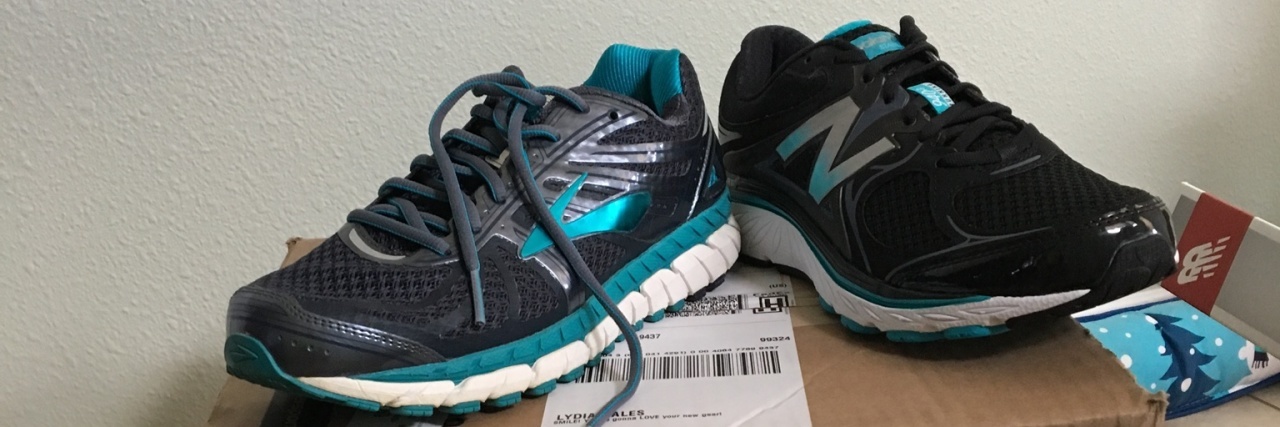Finding Acceptance Seven Years After My Traumatic Brain Injury
On April 25, 2011 my life changed in an instant. I lost control of my car after hitting black ice. The car rolled three times down an embankment and then hit a tree. That tree most likely saved my life. The car would have rolled about 200 more feet, then dropped into a deep ditch. Given that the airbags didn’t deploy, if I didn’t die I would have sustained much more serious injuries. As it was, I sustained a traumatic brain injury (TBI).
April 25, 2018 was my “alive day;” a birthday into the world of TBI and the struggles, heartbreaks, and victories of survival. I view my life in two distinct times: Before Traumatic Brain Injury (BI) and After (AI). That’s rather appropriate as I see how my brain works now as a form of Artificial Intelligence.
My brain and body feel artificial to me. For example, I can’t look out a car windshield when it’s raining. I see the rain drops on the windshield alternating with the road in front of me. Normally, people selectively ignore the rain drops to focus on the distance. I didn’t realize my visual perception was damaged until someone told me. When I was being driven to a neurologist appointment, I asked my friend if the inability to ignore the rain was typical. I can’t remember what it was like before. It’s a good thing I live in the eastern Washington, the dry part of the state. If I lived out toward Seattle, I’d only be able to drive the five days out of the year when it doesn’t rain. I cognitively understand that things are different now, but there’s a disconnect between knowledge and physical memory. I deal with sensory overload, seizures, reduced balance, vision and hearing loss. My body feels alien.
Six months after the accident, I sit on the track after an abortive and painful attempt to run. My knees and palms are scraped and my hope is a fractured mirror, reflecting back the broken and ugly. “I’ll never run again,” I thought, the tears stinging my eyes. I made it two hundred meters at a shuffling “run” – more like a zombie shuffle — before I tripped and hit the ground hard. It seemed reasonable that I should be able to start running — I hadn’t needed the cane to walk for a week now. I start thinking, “My body betrayed me. I won’t run again. I won’t heal. This is as good as it gets.” Tired, defeated, and angry I limped to my car. I felt like I died in that accident — I was just too foolish to see it.
”1, 2, 3, 4” I counted in my head. My feet moved in time with the numbers: “1, 2, 3, 4.” My breath eventually fell into a comfortable rhythm. It was April 25, 2012. A year to the day. “1, 2, 3, 4.” I kept going. Finally I sat on the cold, wet track. It rains on this side of the state, too. The water seeped through my running tights, but I didn’t mind. I just ran a mile for the first time since the accident. Happy Alive Day! Damn, I was tired. I ran again! Victory!
My endurance, strength and balance have grown since that day on the track. I still have to count cadence to maintain my stride. My right foot still turns outward and flops somewhat. I have reduced proprioception in my feet. Counting helps reduce the effect. On April 1, 2017 I ran my first marathon since my injury. In synchronicity, that particular event was the last marathon I ran before the accident. Happy Alive Day, 2017!
According to Elisabeth Kubler-Ross’s research, there are seven stages of grief. The stages aren’t linear. Grief is complicated: people experience jumbled emotions and everyone experiences it differently. Although this model initially addressed grieving after the death of a loved one, it is now applied to different kinds of loss. The stages are:
- Shock and/or disbelief
- Denial
- Anger
- Bargaining
- Guilt
- Depression
- Acceptance and hope
I grieve my brain injury and the loss of who I was. It is normal for grieving to be a continuous process, cycling through the steps in different forms. Eventually, grief eases and people adjust to the “new normal.” You may still feel grief, such as holidays or anniversaries, but it eases over time.
There was no big event or awareness of my Alive Day this year. It snuck past on soft feet, unheard, unseen. It didn’t dawn on me until a week later that it had passed. For this moment, I am in acceptance and hope. It feels good. Perhaps this is why Alive Day was a non-event this year. I hope this sense of peace and acceptance lasts.

